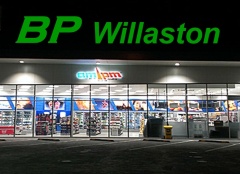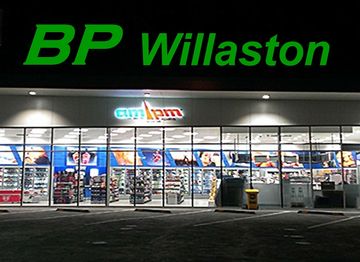Difference between revisions of "Gawler Thematic History - Settlement of the Survey and Township"
| Line 25: | Line 25: | ||
In 1850 plans of the new northern townships of Bertha and Willaston were deposited and the following year the subdivision of Gawler East was completed, reflecting anticipated development of settlement along the Main North Road and adjacent to the growing commercial centre of Murray Street. | In 1850 plans of the new northern townships of Bertha and Willaston were deposited and the following year the subdivision of Gawler East was completed, reflecting anticipated development of settlement along the Main North Road and adjacent to the growing commercial centre of Murray Street. | ||
In April 1853 and in February 1858 respectively sub ¬ division plans of the new townships of Evanston and Gawler South were deposited. In September 1857 blocks in the new town of Gawler West were sold at auction and in March 1858 Bassett Town was surveyed and laid out by George Warren. | In April 1853 and in February 1858 respectively sub ¬ division plans of the new townships of Evanston and Gawler South were deposited. In September 1857 blocks in the new town of Gawler West were sold at auction and in March 1858 Bassett Town was surveyed and laid out by George Warren. | ||
| − | Evanston appears to have represented speculative development along the southern approach by road to the main township. Gawler West was a direct result of the decision to terminate the railway line from Adelaide (completed in 1857) some distance from the township and the expected establishment of industry and services near the station. Gawler South and Bassett Town were laid out to connect the station with Murray Street by road and in anticipation of settlement along the connecting routes <sup>22</sup>. Although these subdivisions did not attract much settlement in this period (except for Gawler | + | |
| + | Evanston appears to have represented speculative development along the southern approach by road to the main township. Gawler West was a direct result of the decision to terminate the railway line from Adelaide (completed in 1857) some distance from the township and the expected establishment of industry and services near the station. Gawler South and Bassett Town were laid out to connect the station with Murray Street by road and in anticipation of settlement along the connecting routes <sup>22</sup>. | ||
| + | Although these subdivisions did not attract much settlement in this period (except for Gawler | ||
South which began to grow rapidly in the late 1860s) and were not included in the Gawler Corporation boundaries until many years later, they contributed to the north/south extension of settlement, reinforcing the pattern dictated by the physical features of the original Gawler Town site. | South which began to grow rapidly in the late 1860s) and were not included in the Gawler Corporation boundaries until many years later, they contributed to the north/south extension of settlement, reinforcing the pattern dictated by the physical features of the original Gawler Town site. | ||
| Line 56: | Line 58: | ||
www.flightpatharchitects.com.au | www.flightpatharchitects.com.au | ||
{{Info | {{Info | ||
| − | |Related Articles=Gawler Thematic History - Introduction, Gawler Thematic History - Land and Settlement, Gawler Thematic History - Surveying the Land | + | |Related Articles=Gawler Thematic History - Introduction,Gawler Thematic History - Land and Settlement,Gawler Thematic History - Surveying the Land |
|Sources=18. SMEC p. 31, 19 SMEC p. 31, 20 SMEC p.32, 21 Loyau G.E. The Gawler Handbook p.109, 22 Hignett & Co. p.11 | |Sources=18. SMEC p. 31, 19 SMEC p. 31, 20 SMEC p.32, 21 Loyau G.E. The Gawler Handbook p.109, 22 Hignett & Co. p.11 | ||
}} | }} | ||
{{MemoryHeader}} | {{MemoryHeader}} | ||
{{MemoryFooter}} | {{MemoryFooter}} | ||
Revision as of 09:55, 28 May 2020
| Type of thing | Government |
| Date made or found | 2020
|
Settlement of the Survey and Township
Of the twelve founding proprietors of the initial Special Survey, it was John Reid and his family who became the first Europeans to settle Gawler, taking up his 630 acres on the banks of the North Para River in February 1839. Reid named his property ‘Clonlea’ and on arrival, the family lived in tents, then later in a four-roomed wattle and daub hut.18 By 1840 Reid had 24 ½ acres under crop, however, Gawler was described as still ‘little more than a survey site with a few pine shacks and a handful of town’s people’. It was part sheepwalk, part farm, but mainly important as a camping and refreshment stop for travellers’; this was, until the discovery of copper at Kapunda in 1842. An official statement in 1840 described the settlement as: ‘Gawler Town is situated near the junction of the North and South para rivers with the River Gawler. It contains one very good inn, one public house, police barracks, two smith’s shops, six dwelling houses and 34 inhabitants. 19
Travellers passing through the property increased dramatically in numbers, following the discovery of copper further north, the increased settlement in the Barossa and with the droving of sheep and cattle from New South Wales, which led the Reids to establishing the ‘Old Spot Hotel’ in Murray Street. Despite the prospects, the Reid’s financial issues led them to selling most of the ‘Clonlea’ property (including the newly laid out town of Willaston), leaving only the homestead (now demolished) and approximately 40 acres of land.
Between 1842 and 1846, the population of Gawler was principally comprised of the early pioneers and those for whom it became an ideal stopping place travelling between Adelaide and the mines further north. The transportation of the ore to Port Adelaide and return trips laden with supplies used Gawler as a rest stop. A bridge had been built over the North Para in 1842, the South Para was still being crossed at the ford at Dead Man’s Pass (formerly Para Pass). The original township boundaries were extended as demand started to grow in the early 1850s, including Willaston in 1848; Gawler East in 1849; Bertha in 1850; and Evanston in 1853. By 1848, the population had grown to 300 with about 60 buildings located mainly along Murray Street and on Church Hill. By 1851, Gawler had a population of over 1,000, a flour mill and two breweries, and was regarded as the ‘key to the north’. Light’s original plan of the town was adhered to without control or oversight by any form of government, but that was soon to change. 20
With the subsequent growth of industrial activity and of the resident population, which could hardly have been foreseen by Light, the township was rapidly extended beyond its original boundaries and permanent residential settlements were formed to the east and south and an industrial/residential district was created to the west, centering around the Gawler railway terminus. The northern townships of Willaston and Bertha remained largely autonomous with their own shops and services, but developed in parallel to, and under the same influences as, the larger parent community. Willaston, brought within the District Council of Mudla Wirra in 1854, retained its character as a separate township, with its own services and small industries including in 1863 "one blacksmith's shop, one machine maker's workshop, one brickyard, one lime kiln, one saw mill, three general and four wheat stores, a Post Office, Council Chambers and one hotel". Considerable growth in the mid- 1860s saw the establishment of a school, cemetery, Wesleyan Church and Post Office. 21
In 1850 plans of the new northern townships of Bertha and Willaston were deposited and the following year the subdivision of Gawler East was completed, reflecting anticipated development of settlement along the Main North Road and adjacent to the growing commercial centre of Murray Street. In April 1853 and in February 1858 respectively sub ¬ division plans of the new townships of Evanston and Gawler South were deposited. In September 1857 blocks in the new town of Gawler West were sold at auction and in March 1858 Bassett Town was surveyed and laid out by George Warren.
Evanston appears to have represented speculative development along the southern approach by road to the main township. Gawler West was a direct result of the decision to terminate the railway line from Adelaide (completed in 1857) some distance from the township and the expected establishment of industry and services near the station. Gawler South and Bassett Town were laid out to connect the station with Murray Street by road and in anticipation of settlement along the connecting routes 22. Although these subdivisions did not attract much settlement in this period (except for Gawler South which began to grow rapidly in the late 1860s) and were not included in the Gawler Corporation boundaries until many years later, they contributed to the north/south extension of settlement, reinforcing the pattern dictated by the physical features of the original Gawler Town site.
Acknowledgments
This report has been prepared by the following people:
• Nancy Cromar (Flightpath Architects)
• Deborah Morgan (Flightpath Architects)
• Kate Paterson (Flightpath Architects)
• Douglas Alexander (Flightpath Architects)
The study team would like to acknowledge the assistance of the following people:
• David Petruzzella (Strategic Planner; Town of Gawler)
• Jacinta Weiss (Cultural Heritage Centre Coordinator; Town of Gawler)
• Jane Strange (Senior Development and Strategic Policy Officer; Town of Gawler)
Gawler History Team thanks: Flightpath Architects, Ryan Viney and the Town of Gawler for allowing us access to this important document of Gawler History.
www.flightpatharchitects.com.au
Related Articles |
Sources
- 18. SMEC p. 31
- 19 SMEC p. 31
- 20 SMEC p.32
- 21 Loyau G.E. The Gawler Handbook p.109
- 22 Hignett & Co. p.11
Memories of Gawler Thematic History - Settlement of the Survey and Township
Do you remember Gawler Thematic History - Settlement of the Survey and Township ? Then Join up and add your memory here.























